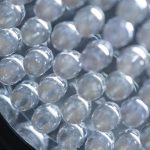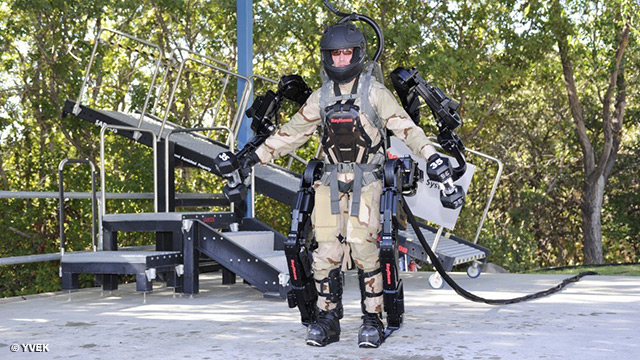
Powered armor for soldiers rapidly approaching
Friday, November 24, 2017 by Jayson Veley
http://www.futuresciencenews.com/2017-11-24-powered-armor-for-soldiers-rapidly-approaching.html

Imagine an army full of super soldiers, each equipped with powered armor that allows them to run faster, jump higher, and reap the benefits of enhanced strength and mobility. It goes without saying that such technology would quite literally change the ways wars are fought, and if the United States military became the first to wear these futuristic suits out onto the battlefield, then our country would be virtually unstoppable.
In recent years, scientists, researchers and designers have been working tirelessly to make these suits, which once only existed in science fiction films, a reality. The problem, however, lies not in the development of the suit itself, but rather finding a power source that can keep it running for an extended period of time. High-density nuclear power plants won’t suffice because of the fact that they are far too large and come with numerous safety concerns. Internal combustion engines could potentially provide the required amount of power for an exoskeleton suit that has limited applications, but they are extremely noisy and require copious amounts of fuel.
The only viable option left, then, is battery technology. But while batteries are generally safe and don’t produce any sound, their energy density is extremely low, meaning that the suit would have to carry so much weight in electrochemical cells that mobility would be extremely limited. But even though technology is not yet advanced enough for the development of lightweight batteries with enough power to run a fully-functional exoskeleton suit, that’s not to say that it won’t one day become a reality.
Just last month, the electric car company Fisker Automotive filed a patent for a new solid-state battery with a three-dimensional electrode. According to the company, the new batteries will begin “a new era in solid-state materials and manufacturing technologies.” Not only will this new battery provide 2.5 times more energy than current lithium-ion batteries, but it will also be much less expensive to develop thanks to new materials and improved manufacturing methods. Fisker Automotive claims that the battery could potentially even power a car for 500 miles, with a charge time of less than a minute.
Obviously, if this battery were to be custom built for the exoskeletons being developed for the United States military, it could very well be the missing puzzle piece researchers and scientists have been searching for. It goes to show that even when advancements in technology seem out of reach, things change and the impossible can become the possible in the blink of an eye.
In September 2011, the Defense Advanced Research Projects Agency, or DARPA, launched a program called the Warrior Web program, which essentially paved the way for fully operational exoskeleton suits that would turn American soldiers into “super soldiers.” The suits, which are designed to be worn underneath the soldiers’ typical uniform so as to remain hidden from potential threats, help soldiers perform tasks out on the battlefield with enhanced speed and mobility.
For instance, the exoskeleton suit being developed by DARPA could allow those who wear it to lift 100 pounds of gear just as easily as they would lift something that weighed 50. In addition, the suit would put a spring in soldiers’ steps, absorbing the impacts on their joints and ultimately allowing them to cover various types of terrain with relative ease.
“In Warrior Web, we want to explore approaches which make that kind of load feel, in terms of the effort to carry it, as if its weight has been cut in half. That’s the goal,” explained Lt. Col. Joe Hitt. “The number one reason for discharge from the military in recent years is musculoskeletal injury. Warrior Web is specifically being designed to address the key injuries at the ankle, knee, hip, lower back and shoulders.”
Whiles there’s no telling what the future holds, one thing that we can be certain of is that in terms of technology, it is very, very bright.
Sources include:
Tagged Under: Tags: exoskeletons, future tech, military, powered armor, science, soldiers, technology, War





